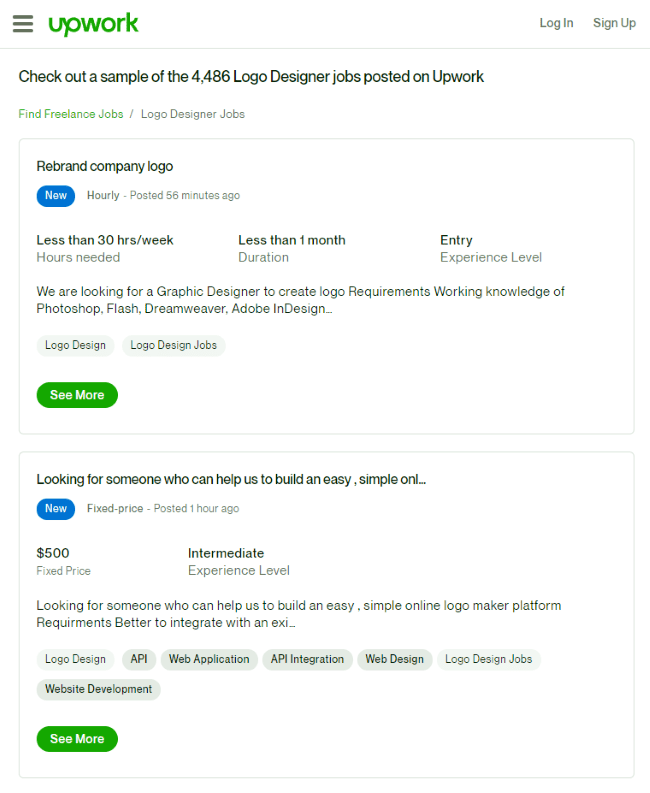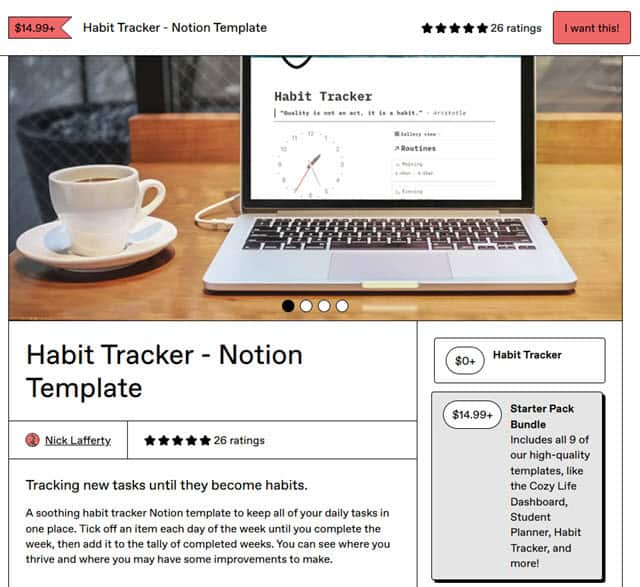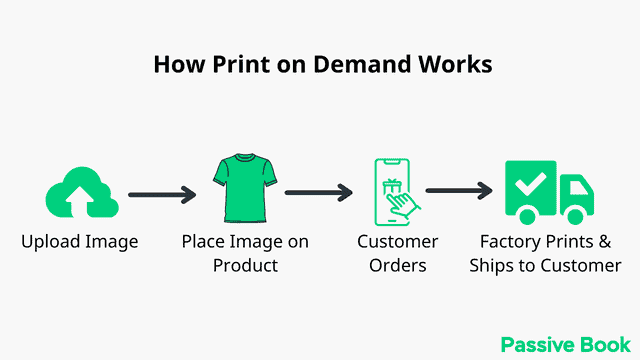I spent over a decade living a double life. Corporate data scientist by day, online entrepreneur by night. My laptop became my second office, wedged between dinner plates and coffee mugs as I built my first digital product after 9 PM. The exhaustion was real, but so was the $1,200 that hit my bank account in month six.
That money proved something bigger than the amount itself: freedom was possible without quitting my job first. I was terrified I’d fail and waste six months of evenings. But the real waste would have been never trying. The cost of testing is tiny. The cost of wondering “what if” for the next decade is massive.
Starting an online side hustle while working full time isn’t about working harder. It’s about working smarter within the 5-7 hours you have each week – without touching your day job security. This guide shows you how to pick a model that fits your schedule, launch in 10 days using only evenings and weekends, and track the right numbers so you know if you’re building something real or just staying busy.

What Is a Side Hustle?
A side hustle is after-hours online work where you sell your skills, products, or content for money. You control when you work because it happens outside your 9-5 schedule. This isn’t passive income. Creator earnings require consistent effort, with many creators working evenings and weekends to build their income streams.
The key distinction is respect for employer boundaries. You work during off-hours you control, not on company time or with company resources. Some full time employees use early mornings before work, while others carve out two weeknight evenings plus weekend blocks. The schedule matters less than the consistency.
Real people make real money with this approach. Alina Bibisheva adds around $500 per month through print-on-demand products she designs in her spare time.
She didn’t quit her job to start. She tested the model first, proved it worked, then scaled within her available hours.
Who Should Start One?
This model works best for busy employees who want to test a flexible, low-risk income stream without threatening their day job security. You don’t need to be an expert or have a business degree. You need 5-7 focused hours each week and the discipline to protect those hours from distractions.
Before you start, check your employment contract for noncompete clauses or moonlighting restrictions. Some employers limit outside work that competes with their business or uses confidential information.
A quick email to HR clarifies what’s allowed. Most companies allow side work that doesn’t interfere with your job performance.
The time commitment is realistic for working professionals. Research on timeboxing shows that 5-7 focused hours of deep work often produces more results than 20 hours of scattered effort.
You’re not trying to build a startup that requires 60-hour weeks. You’re testing a model that fits around your existing life.
Side hustling has become increasingly common among full time workers. A 2024 Bankrate survey found that millions of Americans earn extra income through after-hours work, with rates fluctuating based on economic conditions. You’re not alone in wanting more control over your income.
Address the Fear of Failure Head-On
Most full time employees don’t start because they’re afraid of failing publicly or wasting money. Here’s the truth: failure at this scale costs nothing. You’re risking 5-7 hours per week and maybe $200 in initial expenses. That’s less than most people spend on streaming services and takeout in a month.
The real risk is staying exactly where you are for the next five years because you never tested what’s possible. Set a 90-day deadline to prove or disprove your model. If it fails, you’ve learned something valuable and you still have your job. If it works, you’ve changed your financial trajectory.
Set Your Success KPIs
Most side hustlers fail because they confuse activity with progress. They post content, send emails, and list products without tracking whether any of it moves the needle.
Define your monthly revenue target, the hours you’ll invest, and your risk budget before you start. Write these numbers down. Make sure you revisit them every Sunday during your weekly review.
Early traction looks different than mature business metrics. Your first 30 days should focus on proof-of-concept milestones: your first lead, your first sale, and your first customer testimonial. These three events prove the model works. Optimize for scale later.
Manage progress with simple weekly KPIs. Track your output and results in one place every Sunday. If you’re creating content, you know whether you published your planned posts. If you’re selling products, you know your traffic and conversion numbers. Rigor beats complexity.
Content creators should aim for 100 email signups in the first 90 days, a 5-6% click-to-open rate on emails, and 2-3 posts per week. Industry benchmarks show that these numbers indicate healthy engagement for new creators building an audience.
Light ecommerce models need different targets. Aim for a 2.5-3% conversion rate once you have consistent traffic.
2025 Shopify benchmarks show these percentages separate functional stores from broken ones. Monitor your add-to-cart rate to identify friction points in your product pages.
Digital product sellers should monitor checkout abandonment and refund rates closely. Canvas Supply saw a 94% revenue lift by optimizing their checkout flow and reducing friction. The same product can perform wildly differently based on these technical details.
Pick three numbers that directly connect to revenue. Check them every Sunday. That’s it.
Pick a Model That Fits
The business model you choose matters more than your initial skill level. Three models work when you’re juggling a 9-5.
Services: Trade Skills for Immediate Cash
Services let you sell your existing evening skills through platforms like Upwork. Start with one deliverable that takes three hours or less to complete. Video editing, copywriting, or graphic design work well because you can batch the work on weekends. Your first step is creating a profile and pitching your first client tonight.

Digital Products: Create Once, Sell Forever
Digital products remove the time-for-money trade. Sell templates, guides, or tools on sites like Lemon Squeezy or Gumroad. They handle payments and delivery automatically. Canvas Supply grew their template business by focusing on one specific audience need and iterating based on customer feedback. You create the product once, then it sells while you sleep.

Light Ecommerce: Design Without Inventory Risk
Light ecommerce through print-on-demand eliminates inventory risk. Use sites like Printify to add your designs to products, then sell through Big Cartel or Etsy. Megan Heckman built a sustainable side income designing products for a niche audience she understood deeply. Alina Bibisheva followed a similar path, adding around $500 monthly by working evenings on designs.

If you choose content creation, you’ll distribute through social media and email.
I tested all three models during my first year of side hustling. Services gave me the fastest cash but trapped my time.
Digital products took longer to gain traction but scaled better once they worked. Print-on-demand sat in the middle, offering decent margins with manageable time investment.
Your choice depends on whether you value immediate cash flow or long-term leverage. Pick one model. I wasted four months trying to do all three at once. Don’t.
10-Day Launch Sprint
Most people overthink the launch phase and never ship anything. Launch in 10 days. The goal isn’t perfection – it’s learning what works.
Days 1-3 require three decisions. Pick one audience you understand. Define one outcome they want. Create a guarantee that reduces their risk. Write these down in one paragraph. Make sure you can explain your offer in 60 seconds before you move forward.
Days 4-7 are for building your minimum viable product. Publish your offer on your chosen platform and enable email capture through ConvertKit or a similar tool. Your MVP doesn’t need fancy design. It needs clarity about the problem you solve and an easy way for people to buy or sign up.
Days 8-10 shift to shipping and testing. Send two emails to your initial list or post twice to relevant communities.
Aim for 25-35% open rates and around 5-6% click-to-open rates. Industry benchmarks show these numbers indicate your message resonates with your audience.
The 10-day timeframe prevents perfectionism from killing your momentum. Timeboxing research shows that firm deadlines force better decisions and faster execution. You’ll improve after launch based on real feedback instead of imagined problems.
Protect Time and Energy
Your side hustle dies the moment it starts stealing sleep or destroying your day job performance. Timebox two specific weeknights and one weekend block each week. Set firm stop times and stop working when you hit them. Make sure you’re defending these hours from distractions like Netflix binges or mindless social scrolling.
Sleep isn’t optional when you’re running a double life. Sleep deprivation impairs focus, learning, and decision-making. You can’t build a business if you’re too tired to think clearly at your full time job or during your side hustle hours.
Use AI and automation tools to multiply your available time. A 2024 Zapier report shows marketers save an average of 25 hours weekly through strategic automation—that’s nearly 4 extra workdays per month. Draft emails with AI, then make sure you edit them to sound human. Automate repetitive tasks like social media posting or email sequences.
With only 5-7 hours weekly for your side hustle, automating even 2-3 hours of work increases your effective capacity by 40-60%. Make sure you’re spending your limited energy on high-value work like creating offers, talking to customers, and testing new ideas.
Here’s what most productivity gurus won’t tell you: working 3 focused hours often beats 7 scattered ones. I tracked my output for three months and discovered I made more progress in three deep-work sessions per week than when I tried to work every single night. Fatigue kills decision quality. Two nights off recharges your judgment.
Weekly KPI Review
Every Sunday, log your output, traffic, signups, and sales on one page. Takes 15 minutes. Tells you whether you’re building something real or just staying busy.
Track your conversion rate and click-to-open rate alongside your output numbers. If your conversion rate stays below 2% or your click-to-open rate stays below 5% for three consecutive weeks, run A/B tests. Change your headline, your offer structure, or your pricing. Make sure you’re not repeating the same approach expecting different results.
No first sale by Day 14 signals a fundamental problem with your offer or pricing. Test your price point twice- try a lower price to validate demand exists, then try a higher price with better positioning. Sometimes the problem isn’t your product but how you’ve framed its value.
The weekly review prevents you from drifting for months without noticing. You catch failing experiments early when you can still pivot instead of six months later when you’ve wasted your limited time.
2025 Realities to Watch
The online business landscape shifts constantly. Three major trends in 2025 will affect your side hustle strategy whether you’re ready or not.
AI adoption has reached mainstream. About 1 in 5 US workers now use AI in their job, up from previous years. Use AI to draft your content, design your products, or automate your customer service. But always edit the output to sound human. AI-generated content that isn’t edited stands out immediately and damages trust.
TikTok volatility continues. Don’t build your entire audience on one platform controlled by someone else. Cross-post your content to multiple social media platforms like Instagram, LinkedIn, and X. Capture emails from every follower you can. Your email list is the only audience you truly own.
Google search updates increasingly reward helpful, experience-based content. Generic advice gets buried while detailed, first-hand accounts rank higher. Refresh your content quarterly and add specific examples from your own experience. The E-E-A-T framework—Experience, Expertise, Authoritativeness, Trustworthiness now determines which content wins.
These trends share one theme. Own your audience, own your content, and own your skills. Platforms come and go, but direct relationships with customers last.
Mistakes That Sink You
Expecting overnight earnings kills more side hustles than lack of skill. Creator earnings data shows that many content creators earn below living wage levels, especially in their first year. The business model works, but it requires consistent effort over months before meaningful income appears. Budget for a 3-6 month ramp-up period before your side hustle covers even basic expenses.
Chasing algorithms instead of capturing emails destroys long-term leverage. Social media platforms change their algorithms constantly. Your viral post today gets zero reach tomorrow. Build an email list from day one and treat it as your most valuable asset. Every follower you don’t convert to an email subscriber is someone you’ll lose when the platform changes its rules.
Skipping the weekly KPI review lets failing experiments run for months. You assume you’re making progress because you’re staying busy. But busy doesn’t equal effective. Use the Weekly KPI Review section as your template. Track your numbers every Sunday so you spot problems when they’re still fixable.
Go/No-Go Exit Rules
Quitting your full time job too early is the fastest way to kill your side hustle. Financial pressure forces bad decisions. You discount your prices to make quick sales or abandon your niche to chase trends. Neither works.
The SBA recommends maintaining six months of expenses before making major financial moves. This cushion lets you negotiate from strength instead of desperation. Build this emergency fund before you consider leaving your job.
The exit threshold is clear. Quit only after six consecutive months of netting your target income on 10 hours per week or less. The time constraint matters as much as the revenue. If you’re working 40 hours weekly on your side hustle to hit your numbers, you haven’t built a sustainable business yet. You’ve just created a second full time job with more risk.
This conservative approach frustrates people who want immediate freedom. But it works. Your day job funds your side hustle’s learning phase without the pressure that causes panicked decisions. Use that advantage instead of throwing it away prematurely.
FAQ
What Side Hustle Can I Do While Working Full-time?
Can You Work Full-time and Have a Side Hustle?
Yes, if your employment contract allows outside work. Check your agreement for noncompete or moonlighting clauses before you start. Most companies permit side work that doesn’t compete with their business or use confidential information.
What Jobs Make $3,000 a Month Without a Degree?
Video editing retainers offer a clear path to $3,000 monthly. Land 2-3 clients paying $1,000-1,500 each for monthly editing work. Batch your work on nights and weekends. Start by applying to monthly retainer listings to secure your first client.
How Can I Make an Extra $1000 a Month and Work Full-time?
Two proven paths exist: five service clients at $200 each, or sell 100 digital templates at $10 each. The service path generates faster cash but requires ongoing delivery. The template path takes longer to build but scales better. Review successful case studies to see which model fits your skills.
What Next?
You now have a framework to start your online side hustle without quitting your day job. Pick one business model from the three options, commit to the 10-day launch sprint, and protect your 5-7 weekly hours like your future depends on them. It does.
The path isn’t easy. You’ll work evenings when your friends are relaxing. You’ll miss some TV shows and social events. But six months from now, you’ll have something most people only talk about: proof that you can build income outside your 9-5 job.
Block your 10-day launch sprint on your calendar right now. Seriously—open your calendar app and mark Days 1-3 for this weekend. Then drop a comment below with your launch date and chosen model. Public commitment increases your completion rate by 65%.
Share this post with your friends & followers:
